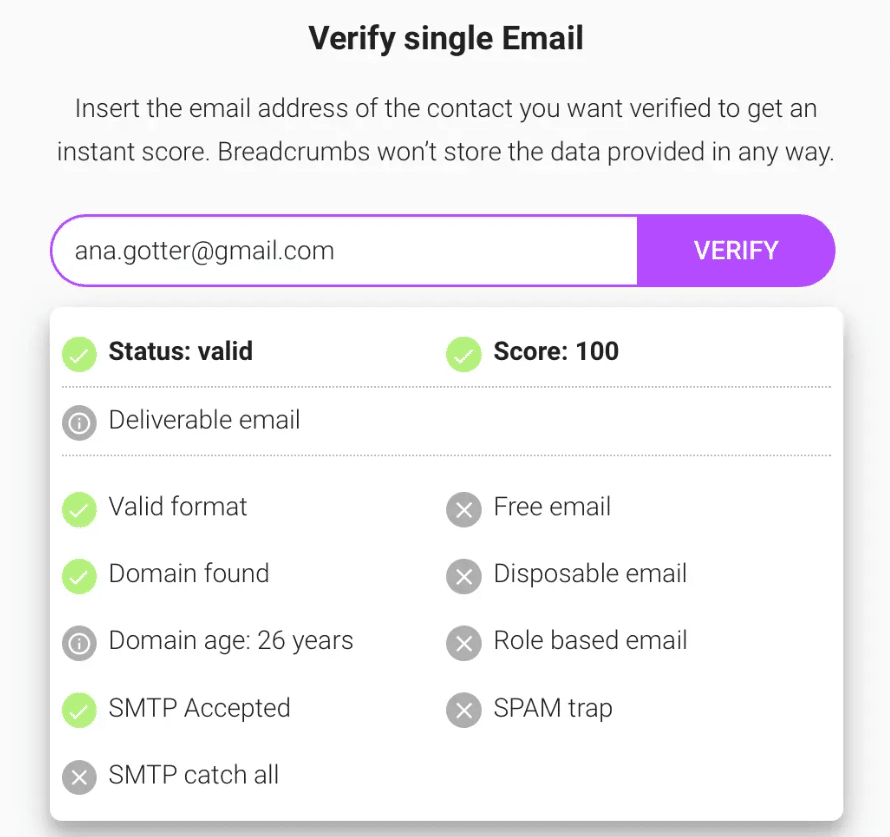Marketing operations is the beating heart of your marketing efforts.
It supports your marketing strategy with the end goal of improving collaboration across multiple departments, engagement, and revenue growth.
If you’re unsure on how to set up a marketing ops strategy from scratch, great news, you’ve landed in the right corner of the interweb.
What is Marketing Operations?
Marketing operations (MOps) refers to the marketing activities conducted behind the scenes in a company.
Common responsibilities include the:
- Chief marketing officer (CMO) allocating the marketing budget and strategic priorities
- Head of content planning editorial calendar and assigning articles to the writing team
- Marketing strategist analyzing ROI for every email marketing campaign in the CRM
MOps lays the groundwork for all marketing functions. Its success is often measured by customer engagement and ROI.
How Do You Develop a Marketing Operations Strategy?
Companies with a marketing operations strategy saw a 15 to 25% improvement in their customer engagement and ROI.
Alas, achieving this breakthrough is an arduous task for many, according to McKinsey.
Here are five quick steps to launch a marketing operations strategy from start to finish.
1. Perform housekeeping in your data warehouse
Every business decision starts with data.
Yet, many organizations neglect to keep their data up-to-date. Every year, poor data quality costs enterprises an average of $12.9 million.
“Your marketing operations team should have a process in place to maintain and clean your data regularly,” shares Boris Jabes, CEO and co-founder of Census.
“This ensures that your marketing campaigns are based on accurate information and that you’re not wasting time or money on customers that don’t fit your ideal customer profile.”
You don’t have to spend hours cleaning your email lists. Use Breadcrumbs’ free email verifier to validate them quickly:
- Connect HubSpot
- Select an email list
- Click Verify
Next, validate your customers’ email addresses. Either upload a list or insert the email address of a single contact. Breadcrumbs will proceed to score your list based on critical factors like the user’s email address domain, format, and SPAM trap.

Update your client database accordingly. For example, email addresses listed as spam traps should be removed immediately.

Need help landing in your recipient’s inbox?
Verifying emails only gets you so far
Making sure your email lands in your recipients’ inbox is one of the biggest struggles for salespeople around the globe.
But what if there was a tool tailored just for you that ensures it happens, and can also create an entire cold email strategy for you?
Meet Cadence by Breadcrumbs, your next-gen partner in cold email lead generation.
After cleaning your email list, run it via Breadcrumbs Reveal to highlight the specific attributes and actions that bring you revenue.

Whether it’s your upmarket customers or a customer segment that you haven’t thought of, our ICP tool will show a detailed view of what your current data looks like and how valuable it is.
Grab your free Breadcrumbs account today.
2. Prioritize easy and impactful tasks
The marketing operations backlog never ends.
Due to the monstrosity of the processes, people, and tech involved, it can be difficult to prioritize which tasks to focus on.
Syncari uses a modified version of the RICE model to quantify the specific tasks the MOps team should tackle first. The shared prioritization framework’s formula (Reach, Impact, Confidence, and Effort) is as follow:

Instead of scoring each factor out of 5, the Syncari team focuses on a score out of 4. The reason being: even number scoring forces a choice. It leaves no middle ground.
Reach: How many people will be affected by this task?
Impact: How meaningful will this task be for those it reaches when complete?
Confidence: How certain are we that we can accomplish this task?
Effort: How long will this task take to accomplish?
Let’s illustrate the RICE model with an example.
Imagine a marketing operations team struggling to prioritize between cleaning the email list vs. building a content management system (CMS).
Here’s what the RICE framework might look like for the email clean-up:
TASK #1: CLEANING EMAIL LIST Reach: 2/4 It’s a small list of only 600 contacts Impact: 3/4 At least 50% of the list are our target customers Confidence: 4/4 It’s a pretty simple task Effort: 2/4 It shouldn’t take us more than a day to clean the email list Total score: (2 + 3 + 4) / 2 = 4.5
And here’s how the RICE model might look for the CMS setup:
TASK #2: BUILDING A CONTENT MANAGEMENT SYSTEM Reach: 4/4 This will affect everyone in the content team: editors, strategists, and freelancers Impact: 3/4 The CMS creates a better browsing experience for readers and likely improves SEO performance Confidence: 1/4 We need to hire a freelance developer or agency to custom build it Effort: 3/4 It will take us at least a month to find a suitable agency or developer to custom build it Total score: (4 + 3 + 1) / 3 = 2.7
It’s a no-brainer.
The email list clean-up boasts a higher score. The marketing team should prioritize it over the CMS setup.
The RICE framework acts as a shared collaborative resource across stakeholders. It provides visibility for all and can be referenced as needed.
Use it if you struggle to prioritize your never-ending tasks!
3. Decide what makes your initiatives a success
Marketing operations is often mistaken as a reporting function when, in fact, it’s a performance improvement function.
Tie every initiative with business objectives to measure impact.
Joe Kevens, the director of demand generation at PartnerStack, once made the mistake of launching lead scoring without tying it to a business metric. As a result, the sales team failed to act based on the scoring information accordingly.
Kevens, who also founded B2B SaaS Reviews, shared with Breadcrumbs his new approach:
“We’re now looking to tie our lead scoring to a performance objective: improving our MQL-to-SQL rate. Once we do, we’ll be able to improve our lead scoring model to turn scores into outcomes.”
Implementing one initiative after another without considering the business impact is a colossal waste of time.
Always tie every strategy with an outcome you want to achieve. That way, you can track progress with impact-level key performance indicators (KPIs) and better understand how each initiative contributes to the big picture.
-
What Is B2B Retargeting and How Can It Generate More Leads?
Read more: What Is B2B Retargeting and How Can It Generate More Leads?Have you ever casually browsed a product online, only to suddenly see ads and promotions…
4. Marry every revenue-driven department
Isolation is the most surprising villain in companies with stagnant revenue growth.
Businesses with independent departments experience silos, workplace drama, and poor brand experience. Whereas businesses with tightly aligned teams—marketing and customer service, in this case—achieve 2.8 times greater annual increase in revenue.

At Checkr, marketers collaborate closely with the sales team.
“We make sure marketing is always on the same page with sales,” shares Linda Shaffer with Breadcrumbs.
The chief people operations officer at the HR background check startup said, “Marketing always asks about their needs. This way, they can support sales and align marketing efforts with sales goals.”
For example, if sales is struggling with objections from a specific customer segment, marketing might create content to address the concerns to take the weight off their shoulders.
One way to align multiple departments quickly is to use a contact scoring system like Breadcrumbs. Our co-dynamic platform gathers your customer data across multiple sources (e.g., CRM, product analytics) into one place.

That way, every stakeholder across the company has a complete view of all customer journeys.
Marketers can determine ROI for every email sent and get buy-in for future campaigns. Sales can identify leads further down the funnel and are ready for a sales pitch. And customer support can pinpoint at-risk customers and step in at the right time before churn happens.
Breadcrumbs gives you better visibility into your best customers today. Grab your free account here.
5. Invest in marketing software and processes for company-wide collaboration
True alignment in a MOps strategy requires cross-functional collaboration.
To break down information silos and encourage everyone to communicate seamlessly, use a cross-channel tool.
These tools can take multiple forms. Solutions like Digizuite and Bynder are ideal for teams requiring massive asset management. Whereas platforms like Breadcrumbs are helpful for product-led and revenue-focused teams.
💡One potential challenge in this stage is the lack of adoption Consider investing in product training and implementing a digital adoption platform to encourage your marketing team to use the software. Make it as easy as possible. Webris, an SEO agency, lets its employees join meetings without registering an account and manage content easily through deep integration. It’s a simple way for the marketing operations team to revisit workflows and evaluate strategies together frictionlessly anytime and anywhere.
Besides tools, you’d also want to increase cross-departmental meetings.
At Hearth, marketers would meet with the product development team every week to ensure that they’ve accurately reflected the product features in the ad copy. The marketers would also meet with the engineers to work on improving conversion rates.
Improve Your Marketing Operations Today
Marketing operations is not a reporting function.
It’s the MVP of all marketing functions. Marketing ops support strategies and campaigns, improving collaboration, engagement, and revenue growth in the long run.
The best (and easiest) way to improve MOps is by aligning multiple departments with a contact scoring system like Breadcrumbs.
Grab your free account here to gather all data into one place, eliminate information silos, and create a better brand experience for your best customers today.
FAQs
1. What is the goal of marketing operations?
The role of marketing operations is to improve the marketing effectiveness of your strategies and campaigns so that you can boost cross-functional collaboration, engagement, and revenue growth in the long run.
2. What are the types of marketing operations?
Marketing operations focuses on three key components: people, processes, and marketing tools (e.g., marketing automation platform).
These marketing ops responsibilities include implementing strategic decisions in content marketing, assigning tasks in a project management tool, and automating workflows in marketing automation software, among others.
3. What is the difference between marketing and marketing operations?
Marketing is the business of promoting products or services, whereas marketing operations refers to the responsibilities that happen behind the curtain in marketing.
4. What do marketing operations managers do?
Marketing Ops professionals work closely with cross-functional teams to manage strategies and campaigns across channels to generate revenue pipeline.
MOps managers boast strong expertise in demand generation, lead scoring and account-based marketing methodologies, revenue acceleration, marketing technologies (e.g., customer data platforms like CRMs), and executive reporting.
5. How do MOps teams work with other teams?
MOps collaborate with the marketing departments and other business units through a marketing automation tool stack and cross-functional meetings.






